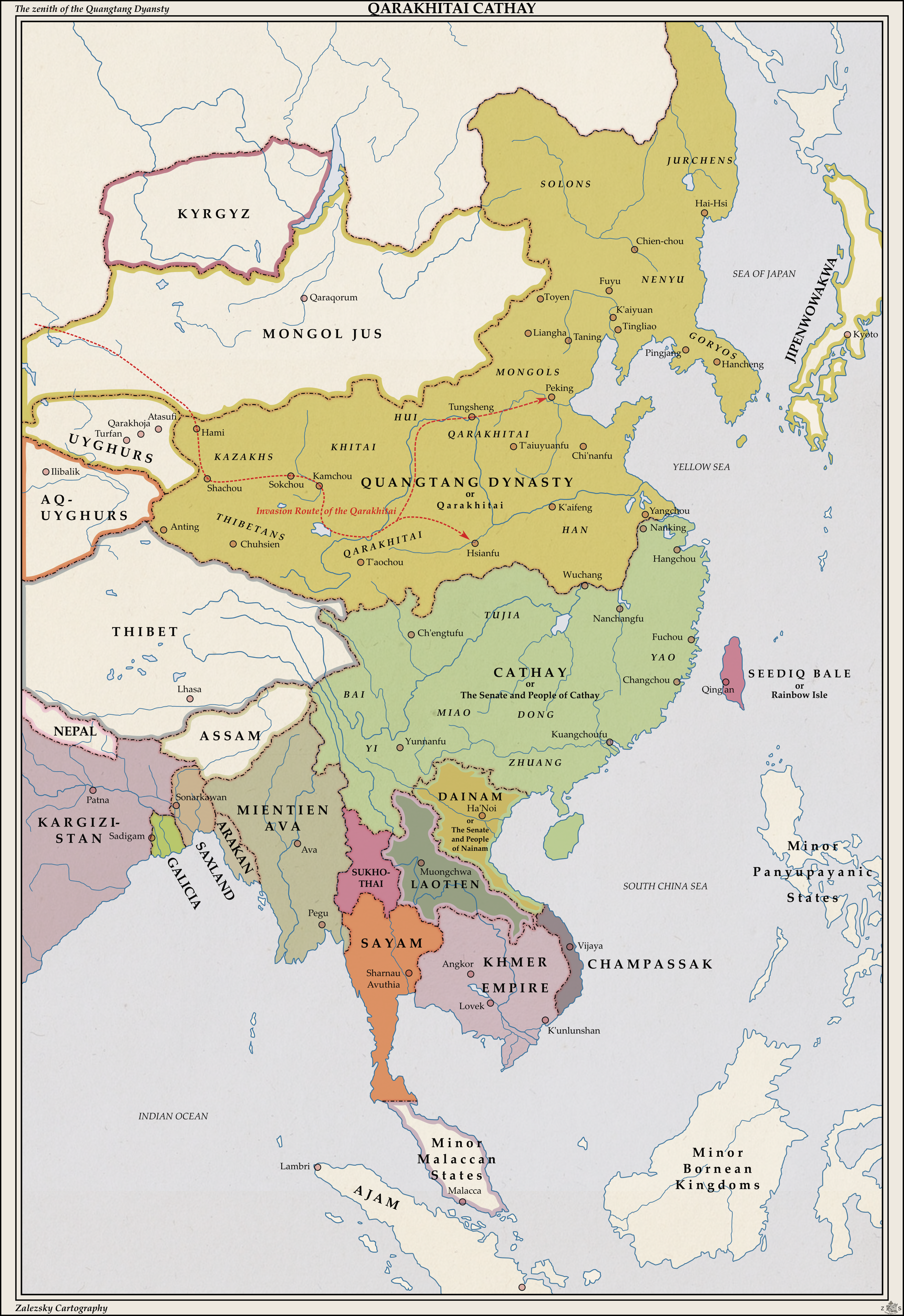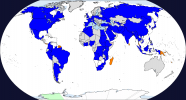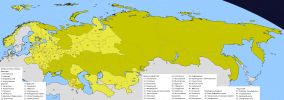And here is my map from the 11th Telephone Map Game. Like @JuniperSpring said, there's a lot of great maps from this round!

You are using an out of date browser. It may not display this or other websites correctly.
You should upgrade or use an alternative browser.
You should upgrade or use an alternative browser.
Map Thread XXI
- Thread starter fluttersky
- Start date
-
- Tags
- map map thread
- Status
- Not open for further replies.
Threadmarks
View all 131 threadmarks
Reader mode
Reader mode
Recent threadmarks
[50+ Likes] Sultanate of England, by Sārthākā Big Nations series, by Alex0505 A re-projection of Jean Lattre's 1762 world map, by Ashtagon [50+ Likes] The Russo-Ukrainian conflict in context, by NeonHydroxide Rose, Tulips, and Liberty, by Unkown00 Caliphate of Albion 1450, by Sārthākā 1932 Centauri-Human War, by Alex0505 Bharata is the World (part 3) by wildviper121
Since ancient times, the tranquil harbor lined with houses of white coral has served as a welcome haven for travelers across the Red Sea. These days the bustling port is the gateway to Mecca for millions of pilgrims on the Hajj from Africa. The busy port has been controlled by Egyptians, Arabs, Emirs of Mecca, but has for a long while languished in obscurity and decline. But the opulent pilgrim-filled city we know today owes its existence and prosperity to the strange twists and turns of history in the early 20th century.
Already in the 15th century Sawakin was the main destination for Muslim pilgrims from across North Africa, heading to the port city of Jedda, the gate of Mecca. Sawakin was conquered by the Ottoman Empire and in the 18th century it was placed under the authority of the governor in Jeddah, as part of the Habesh Eyalet. The eyalet governor’s rule competed with that of the Sharifate of Mecca, a nominal state ruled by the Hashemites, who claim their descent from Prophet Muhammad himself and have been entrusted to be the custodians of the holy city of Mecca for over a thousand years. However, despite this great burden, the Hashemites were deprived of true power and spent centuries playing the role of pious vassals of various Muslim powers, finally coming under the rule of the Ottoman Empire. But as time passed the Hashemites’ loyalty to the Ottomans vaned, as the “sick man of Europe” was no longer up to the task of defending its vassals from the assaults by desert-dwelling Wahhabis of Najd, led by the House of Saud.
In the final years of the Ottoman Empire, discontent grew across the Arab lands, and horrid defeats in the disastrous Great War were the caliphate’s death throes. The British sought an ally against Ottomans among the Arabs, and they found one in the Hashemites - the Arab Revolt led by them crushed Turkish dominion over the Middle East and pushed the Ottomans out of Arabia and the Levant. The Hashemites, who were promised to be made the Kings of Arabs, promptly proclaimed themselves the rulers of newly declared Transjordan, Iraq, Syria as well as their native Hejaz - recognized by the British along with the sliver of African shore in Sawakin. However, the British and French soon reneged on their promises and carved the Middle East apart among themselves, forcing the Hashemites out of Syria, just as the Wahhabis of Najd besieged the Hashemite heartlands in Hejaz. As the onslaught waged by Ibn Saud pushed Hashemites further and further to the coast the British support continued to wane, until the British finally refused to support Hejaz in 1924. By 1925 the merciless Wahhabi onslaught reached the gates of Medina and Mecca, cities once before desecrated and decimated by Saudi-led Wahhabi forces a century prior, causing mass panic and rumors of the impending destruction of the Kaaba itself. The Hashemites hurriedly gathered what they could within Mecca and fled the Saudi forces at the break of dawn, surrendering the holy city emptyhanded… or so it seemed. As the Wahhabis demolished tombs and gravesites in Mecca, the royal family of Hejaz fled their capital of Jeddah with whatever relics and riches they could take on the ships provided by the British, to the one remaining scrap of their domain– the remote African port of Sawakin. Upon their arrival at the city of white coral, the Hashemites proclaimed that they stayed true to their promise to protect the faith’s holy sites by saving its greatest relic from desecration – the Black Stone of Kaaba.
The proclamation was met with furious denial by Ibn Saud, who asserted the Black Stone was safe and secured in the wall of the holy Kaaba for all pilgrims to see – but also skepticism and derision from other Muslims. While the Black Stone is a revered relic, the holiness of Mecca and the Kaaba do not derive from it. In fact, the Black Stone has been desecrated on many occasions through history, having been struck, smashed by catapult, and even stolen away by Qarmatian heretics who set it into their own mosque to unsuccessfully supplant Mecca - but never before have there been two claimed Black Stones. Despite their derision and threats, the Saudis did not attempt to cross the British-controlled Red Sea to eradicate Hejazi Hashemites, allowing them to entrench themselves within the port city and to put the remains of their royal wealth into the construction of the Black Dome Mosque to house their supposed relic. The “ease” with which the Saudis allowed the Hashemites to claim such a feat, has had some skeptics suggest that if the Black Stone was truly stolen away by the Hashemites it would have done the Wahhabi iconoclasts’ work for them. While destroying the Stone would have incurred the wrath of the entire Muslim world on Ibn Saud, replacing what they considered an object of idolatry with a harmless decoy could have appealed to Wahhabi fundamentalists.
For decades to come the Kingdom of Hejaz remained a rump state, confined to the harbor of Sawakin while still claiming Hejaz and the two holy cities. The Hejazi Hashemites’ cousins in Jordan and Iraq oversaw the holy sites of Jerusalem and the ancient Islamic capital of Baghdad, while Sawakin became the favored destination for African Muslims on the Hajj, seeking to pay their respects to the Black Stone before sailing to Mecca – a sentiment not shared by most Arab Muslims. Despite this, Hejazi Hashemites and Saudis remained in a state of war, with Riyadh barely tolerating the pilgrim route through their enemies’ nest. Threatened by the influence of the House of Saud and the formation of the United Arab Republic of Egypt and Syria by Arab nationalists, the Hashemite kingdoms of Jordan, Iraq, and Hejaz chose to pursue a formal union by declaring the Hashemite Arab Federation in 1958. The Federation’s proclamation only escalated the Hashemites’ confrontation with their neighbors, and as the looming threat of a Saudi invasion of Sawakin began to seem inevitable, the royal family secretly made arrangements for their Black Stone’s transportation to Baghdad, where they intended it to be set into a grand mosque in the heart of the ancient capital from the Islamic Golden Age. But mere six months after the Federation’s founding and weeks before the Black Stone’s ceremonious transportation could commence, the Middle East was rocked by the news of a military coup in Iraq. The Hashemites and Saudis could only watch in horror as photographs of the Iraqi royal family’s mutilated bodies appeared in newspapers around the world: a grim warning to nobles by Arab nationalists. Deprived of its largest state, the union quietly dissolved, as the conflict between Hashemites and Saudis ground to a halt. In 1959 the Kingdom of Hejaz officially recognized Saudi dominion over their former territories and adopted the new name of the Hashemite Kingdom of Sawakin, finally establishing diplomatic relations after three decades of war. While the kingdom has been reduced to a mere harbor on the Red Sea coast, it is now surrounded by an urban agglomeration reaching up to a million inhabitants by certain estimates, as well as vast areas privately owned by Hashemite nobles. Various attempts by the royal house to purchase over a thousand square kilometers worth of sovereign territory from Sudan with support from the pious local Beja tribes bore little fruit so far, but the rulers of Sawakin seem intent on expanding their domain at the expense of their poverty-stricken neighbor.
Nowadays Sawakin’s white streets are filled year-round by robed pilgrims from across Africa, coming to rest and pray in the Black Dome Mosque before continuing their pilgrimage to Mecca. While for most Muslims the idea of the Black Stone in Sawakin borders on sacrilege, the alleged presence of such a holy relic on their continent has been of great significance to African Muslims, many of whom see it as an omen of Africa’s rebirth after centuries of slavery and foreign rule, just as the kingdom itself has risen from the grit of defeat and exile to its modern-day opulence. Yet still, the royal subjects of Sawakin watch the evening sun set into the Red Sea, leaving wine-dark shadows behind ships full of pilgrims sailing to the kingdom’s former capital of Jeddah, now ruled by the heretics who conquered Hejaz.
(NOT MINE)
Last edited:
Lovely to see more of these, but you should probably make it explicit that this is by Alagremm, like the ones you posted yesterday.Hashemite Kingdom of Sawakin: Heretics of Hejaz
Sultanate of Kilwa: Explorers of Australia by u/Alagremm

"Those who weren't born in Latori consider it as a country of freedom and opportunities... but for me it's more like a trap which I still can't escape."
You play a good game, then you make a neat map based on it. If y'all are interested, here is the game!
Cross posting my entry for the Map Telephone Game 11th Edition. My map followed @ZeSteel's "War of Southern Aggression" where north and south china fought for dominance with the North winning. It was hard to decipher the date range that the previous map was set in so I decided to make it roughly ~1500 C.E. +/- 100 years. I added some flavour in India hoping that the next map would utilize my strange additions.
Kaiphranos
Donor
This was my map for the latest Telephone Map Game:

I followed on from @GodoftheTranses and decided to come up with an explanation for the rectangle in Northern Luzon.

I followed on from @GodoftheTranses and decided to come up with an explanation for the rectangle in Northern Luzon.
Sorry about that. There was just enough weirdness everywhere (e.g. Cathay in southern China) that I couldn't get a good handle on an overarching scenario when I made my sequel.Cross posting my entry for the Map Telephone Game 11th Edition. My map followed @ZeSteel's "War of Southern Aggression" where north and south china fought for dominance with the North winning. It was hard to decipher the date range that the previous map was set in so I decided to make it roughly ~1500 C.E. +/- 100 years. I added some flavour in India hoping that the next map would utilize my strange additions.
EDIT: And thanks to @Bob Hope for making a 1750 rivers basemap available.
Last edited:
I see an earlier Ottoman collapse and a more divided India. What year is this?Cross-posting from the 11th Telephone Map Game! Do check out all the other maps! I must say I'm quite proud of this one.

You made a typo regarding Dainam's name in the official name (Nainam), it seems.Cross posting my entry for the Map Telephone Game 11th Edition. My map followed @ZeSteel's "War of Southern Aggression" where north and south china fought for dominance with the North winning. It was hard to decipher the date range that the previous map was set in so I decided to make it roughly ~1500 C.E. +/- 100 years. I added some flavour in India hoping that the next map would utilize my strange additions.
A surviving French Republic competing with Britain? I like it!Cross-posting from the 11th Telephone Map Game! Do check out all the other maps! I must say I'm quite proud of this one.

I like itThis was my map for the latest Telephone Map Game:

I followed on from @GodoftheTranses and decided to come up with an explanation for the rectangle in Northern Luzon.
As derivative and done-before it might be, I (personally, anyway) still think it'd be fun to see your own take - with the standard Munroist set of notes and rationalizations we've all grown to love - on a Roman Empire wank... unless you've done it before? I don't recall it in this format, though, and I've seen most of the wanks. (I like your series, okay? I enjoy wanks.)Seems like there's demand for it! (My first thought was maybe Poul Anderson's "Stupor Mundi" only with successful modernization?)
Ah, but everyone's done a W. Roman Empire wank.
Though of course that choice lies within your own volition, and since you did say your enthusiasm is flagging... I of course understand if you might not want to do it.
(for clarification: I'm talking about a "RE with Rome as Capital" wank, not the "WRE survives, ERE crumbles", though that's a pretty cool - and rather more original - idea too!)
So Droogland would be the ancestral homeland of the Droogs?Cross-posting from the 11th Telephone Map Game! Do check out all the other maps! I must say I'm quite proud of this one.

It's an oversight on my partAre the country borders shown those before or after the war? If Finland held Karelia before the war, why do Petroskoi, Sekehe, Sorokka, Enso and others have Russian names?
I wonder if population could be updated to include the calculated pop of entire regions/historical entities like Central America minus mexico or the former Austrohungarian empire50 most populous nations in blue - an interesting base for the X number of nations idea/wanks
The 50 most populous/large nations
- Dark blue: population
- Light blue: population plus area
- Green: area only
View attachment 767481
Serbia and Montengro still being united on so many maps is deeply entertaining to me, though TBF South Sudan isn't here either so it makes sense
Threadmarks
View all 131 threadmarks
Reader mode
Reader mode
Recent threadmarks
[50+ Likes] Sultanate of England, by Sārthākā Big Nations series, by Alex0505 A re-projection of Jean Lattre's 1762 world map, by Ashtagon [50+ Likes] The Russo-Ukrainian conflict in context, by NeonHydroxide Rose, Tulips, and Liberty, by Unkown00 Caliphate of Albion 1450, by Sārthākā 1932 Centauri-Human War, by Alex0505 Bharata is the World (part 3) by wildviper121- Status
- Not open for further replies.
Share:


